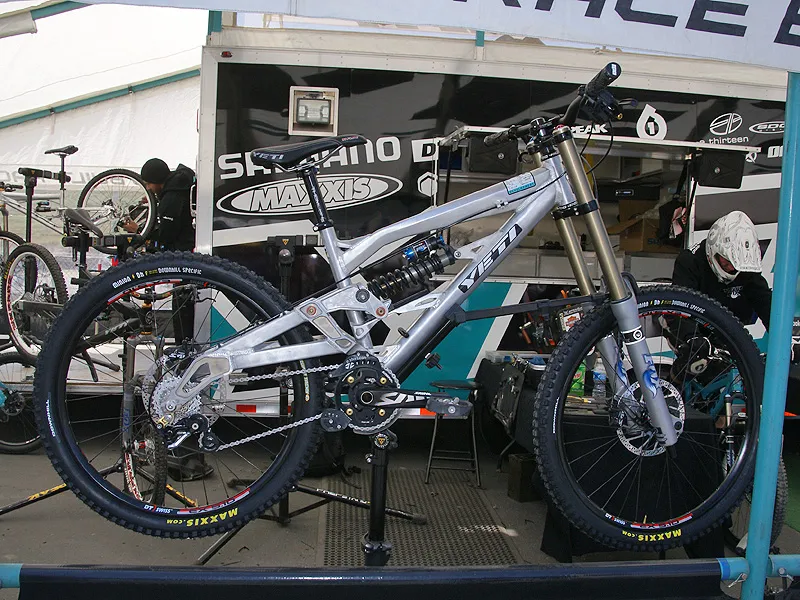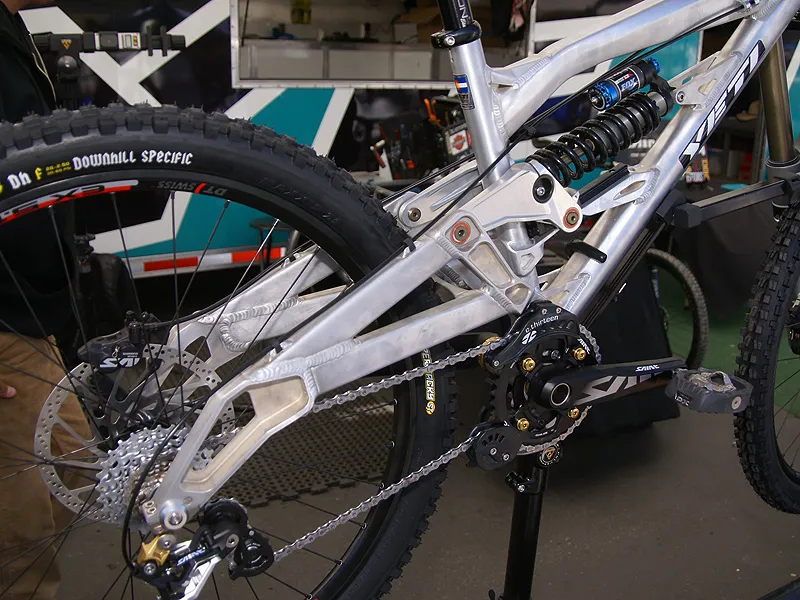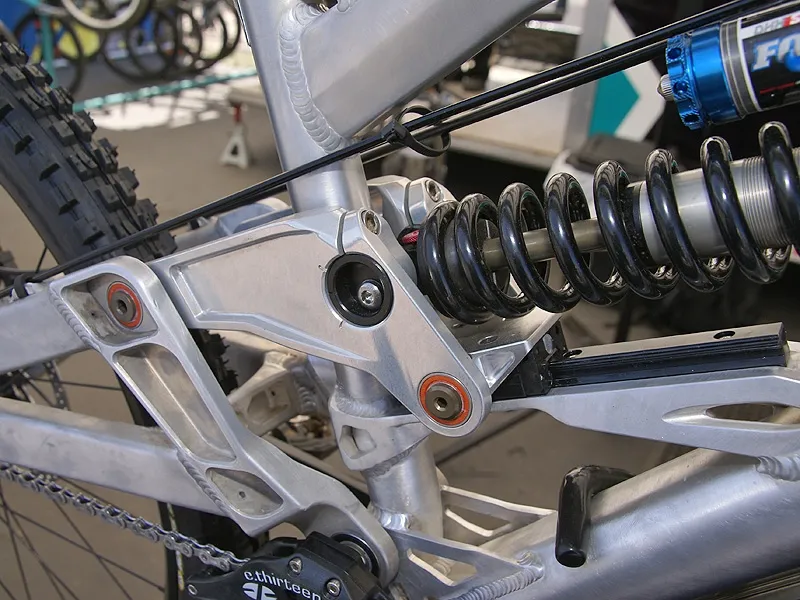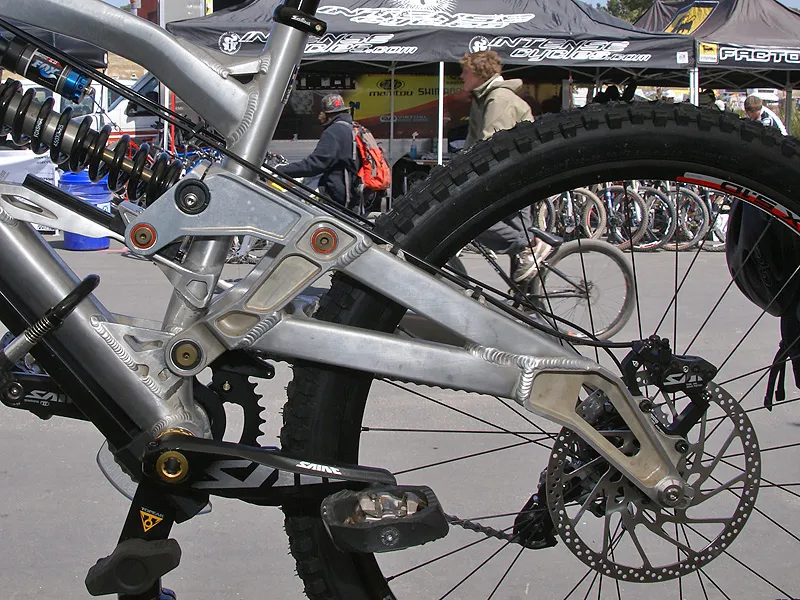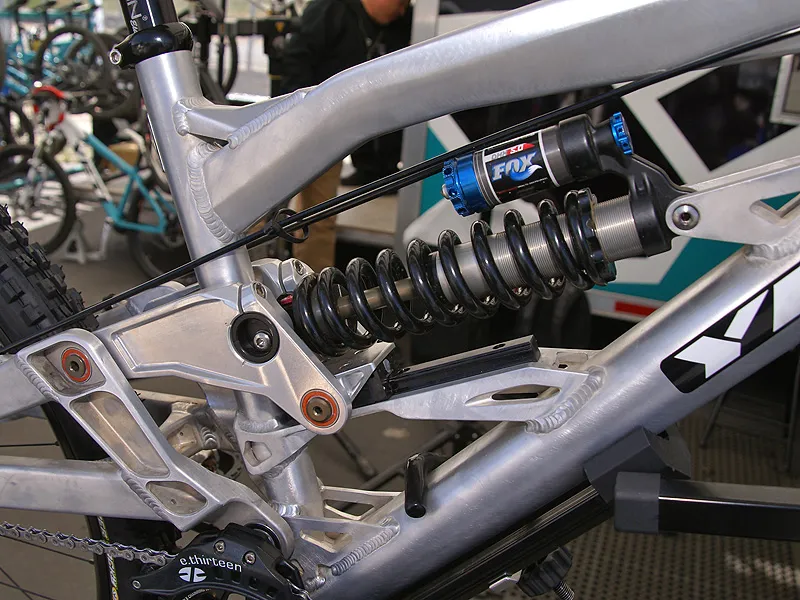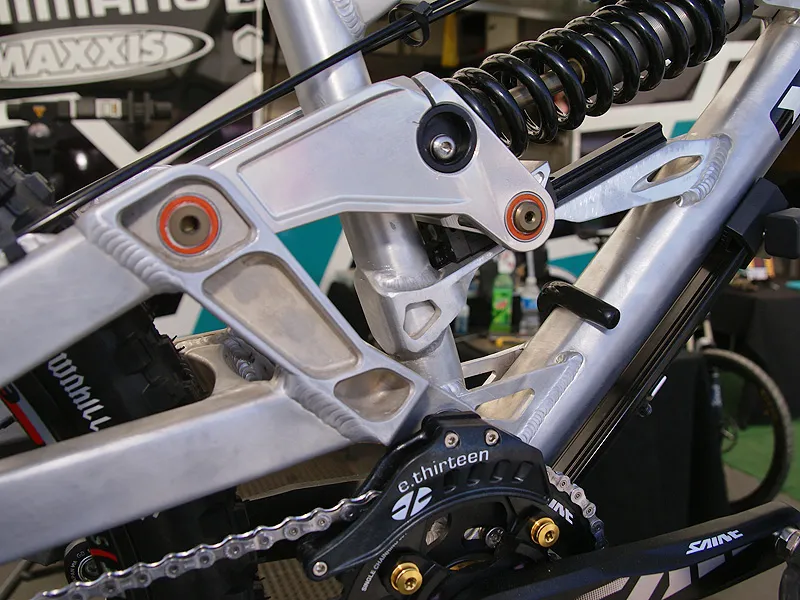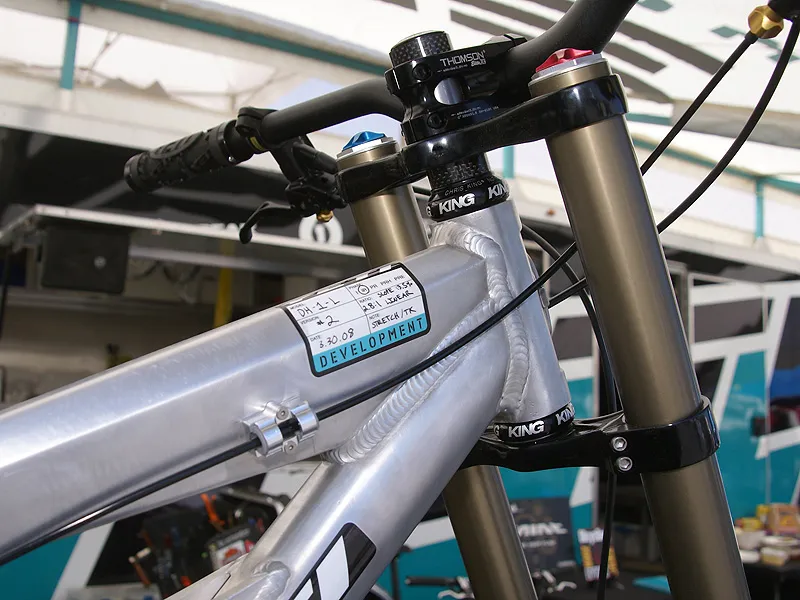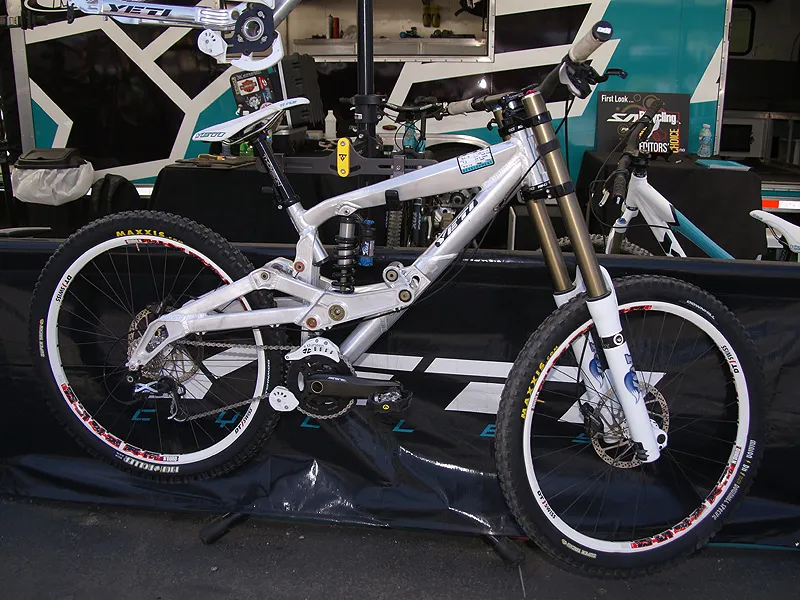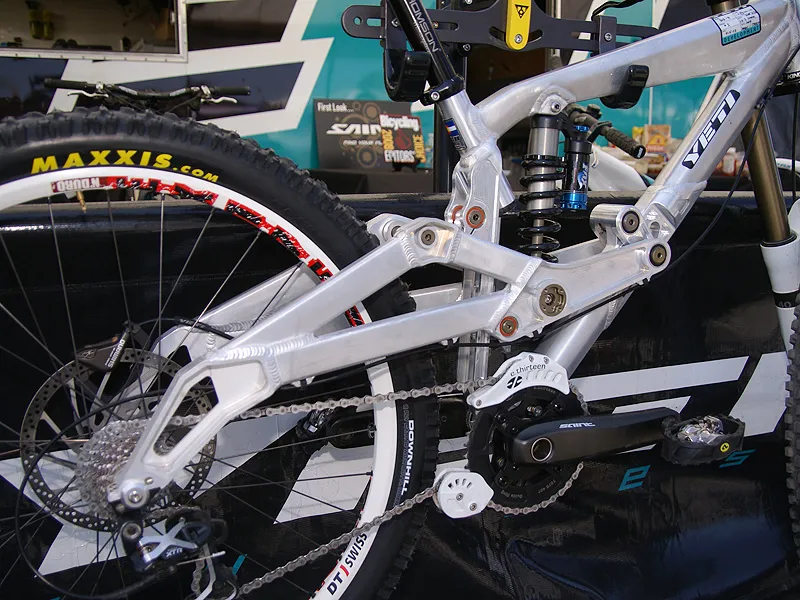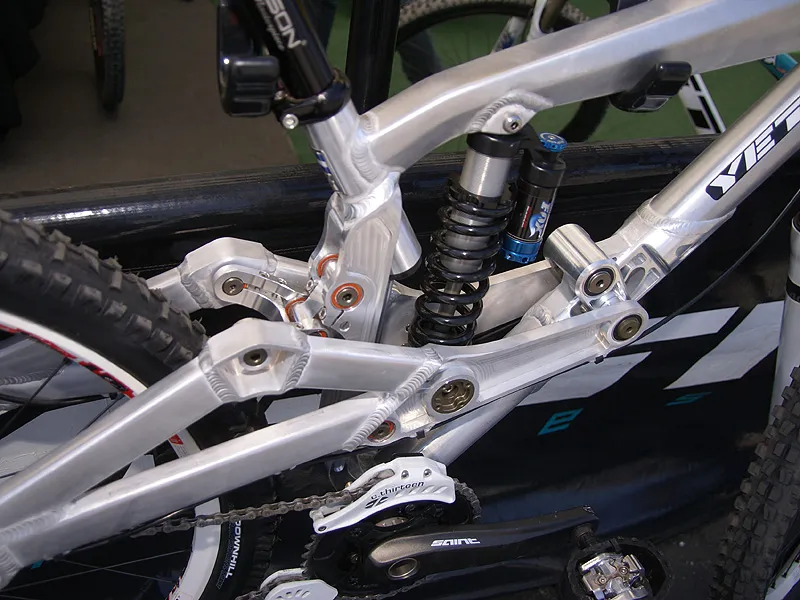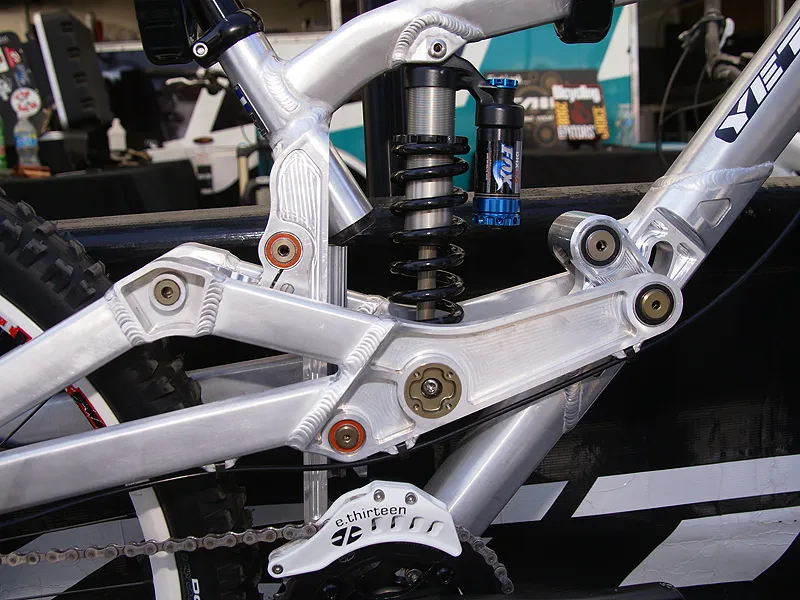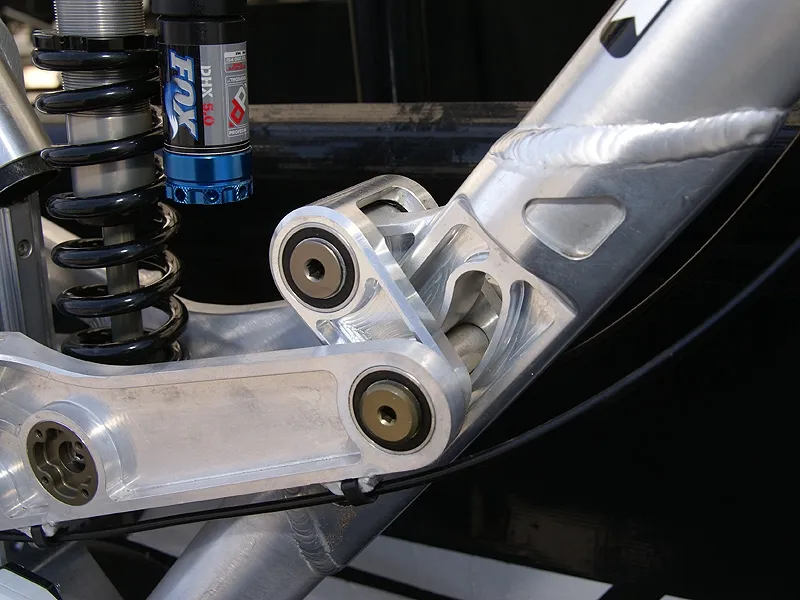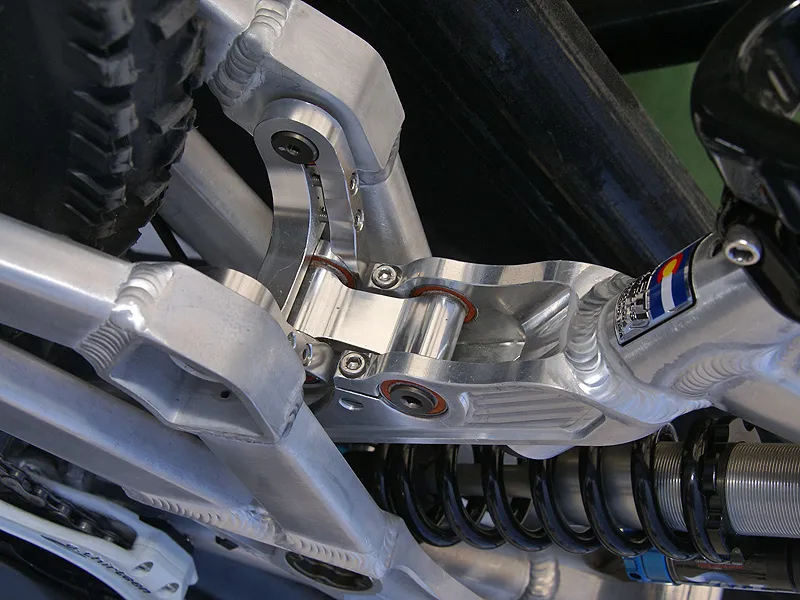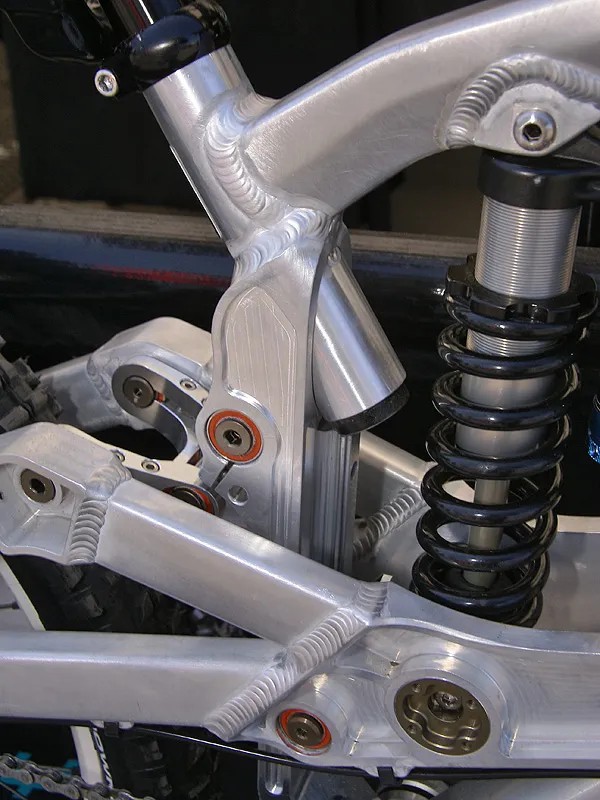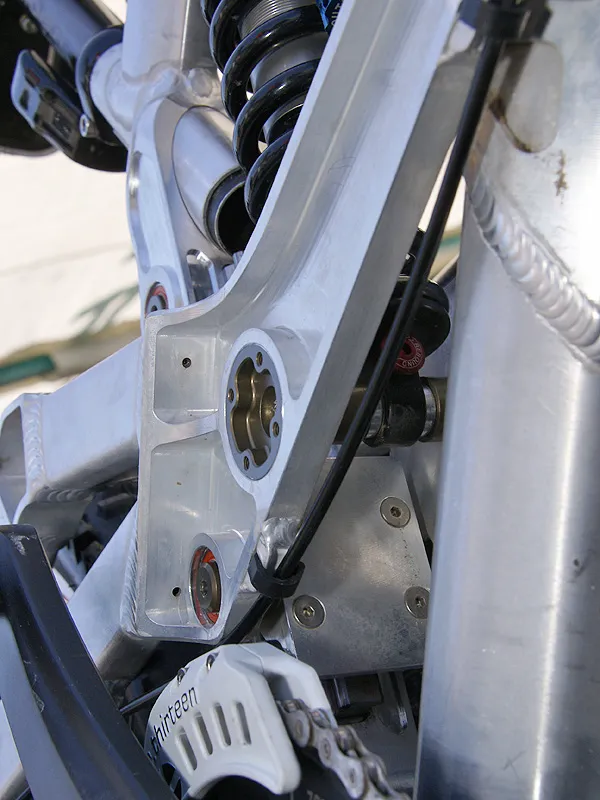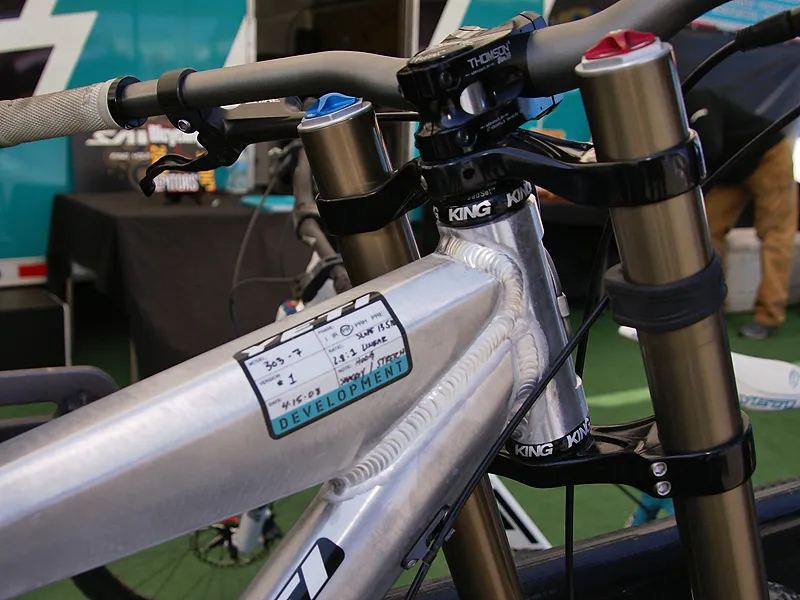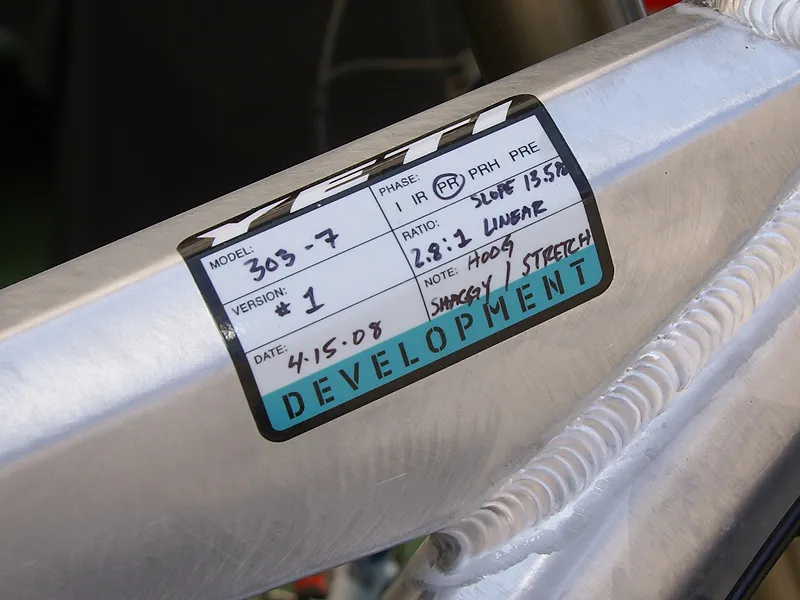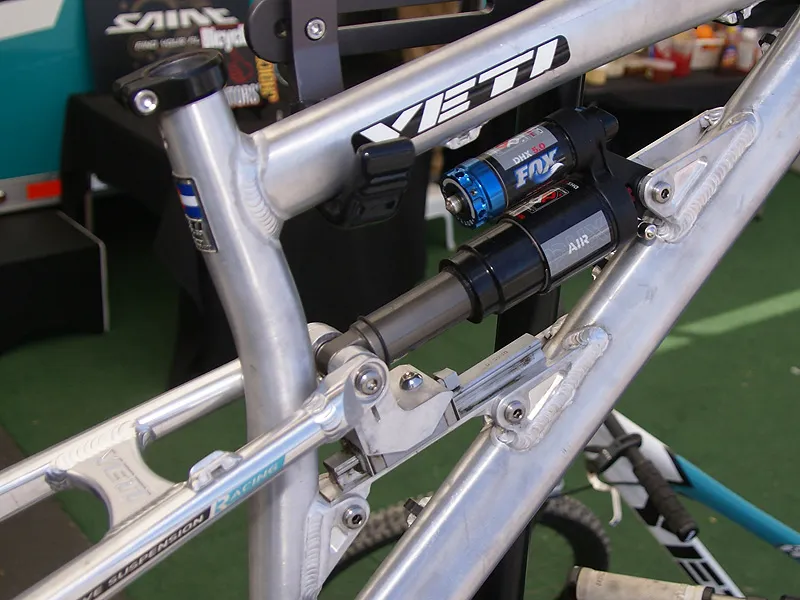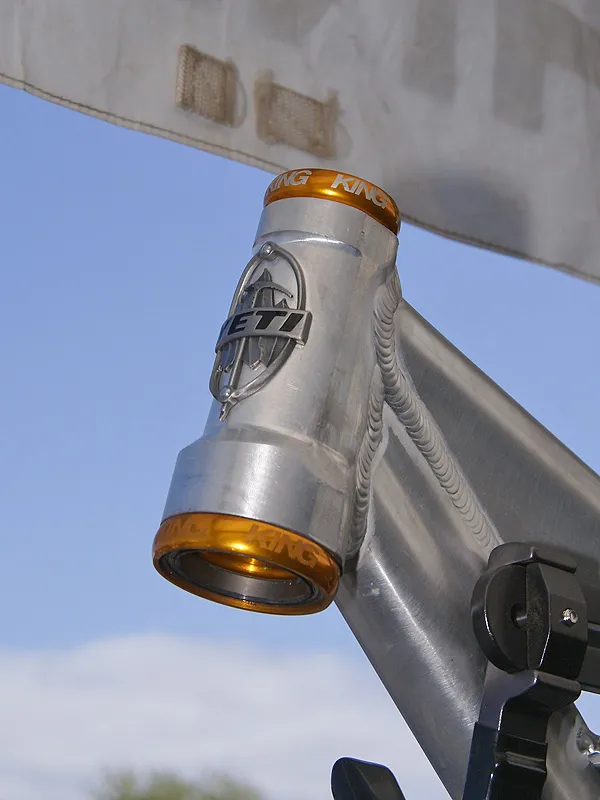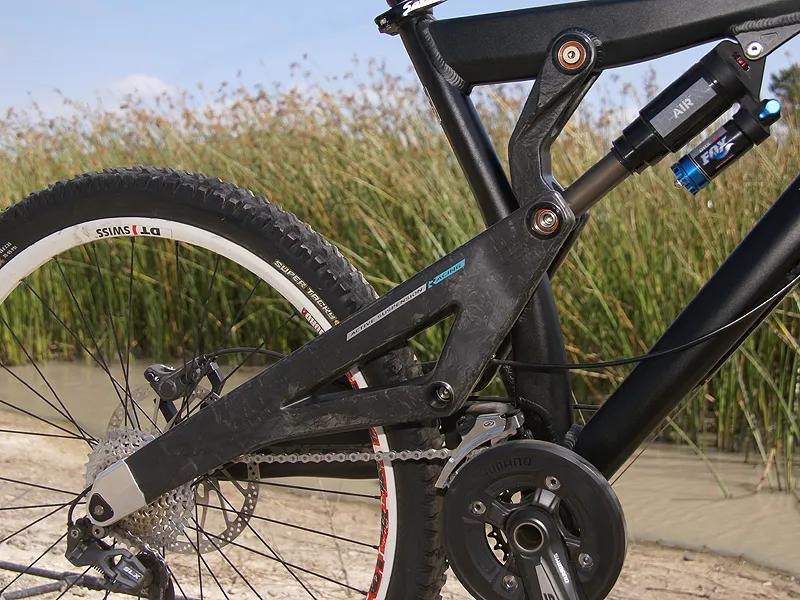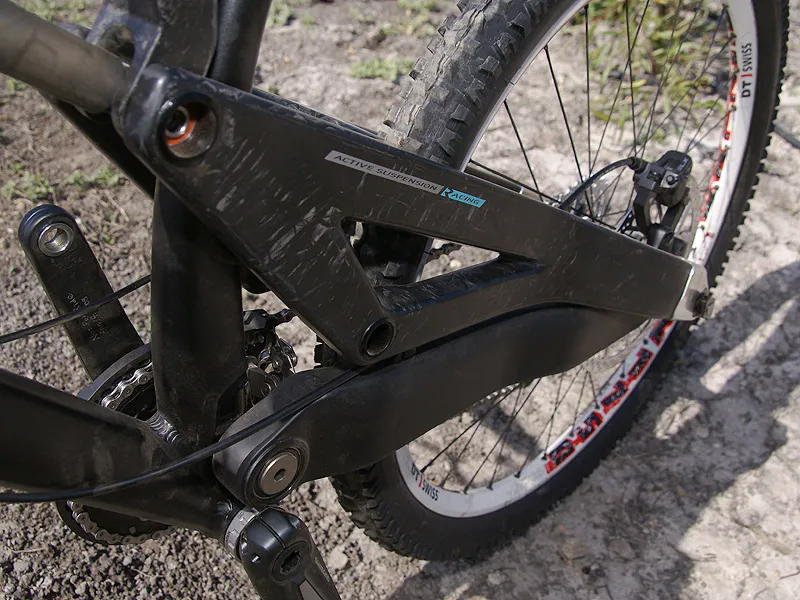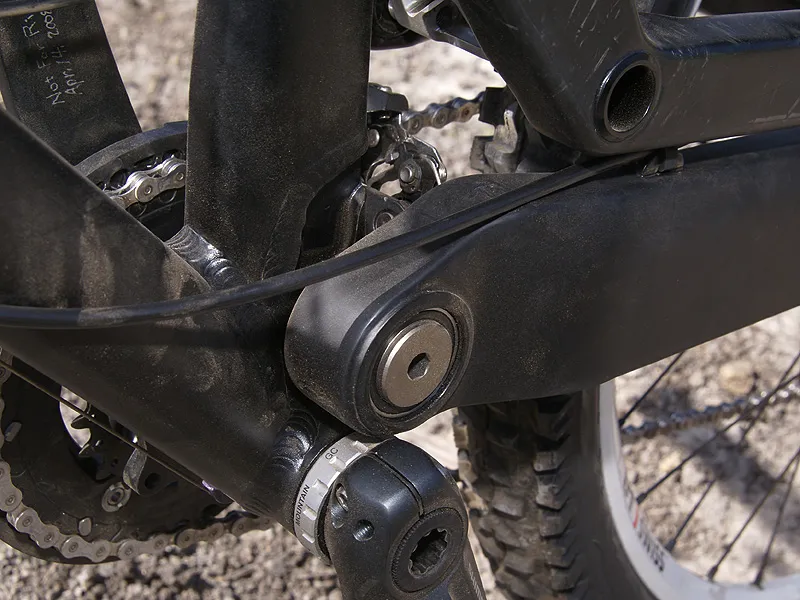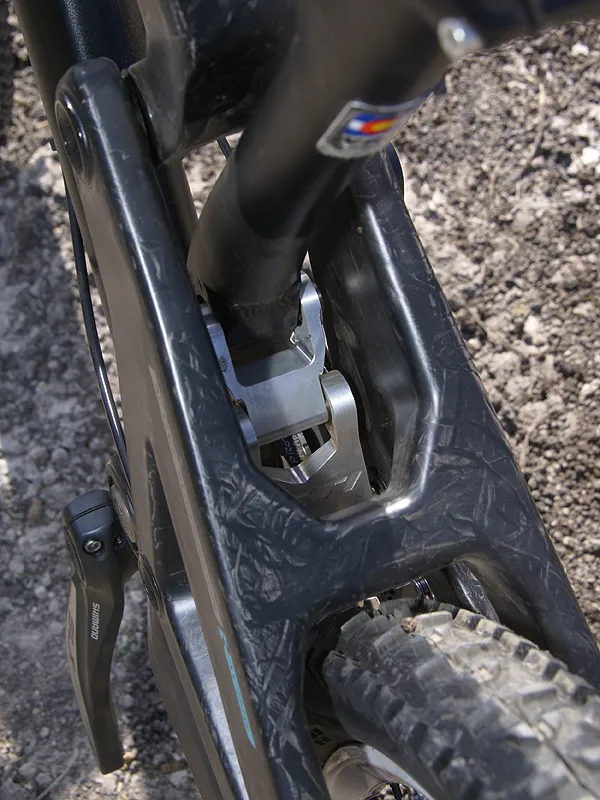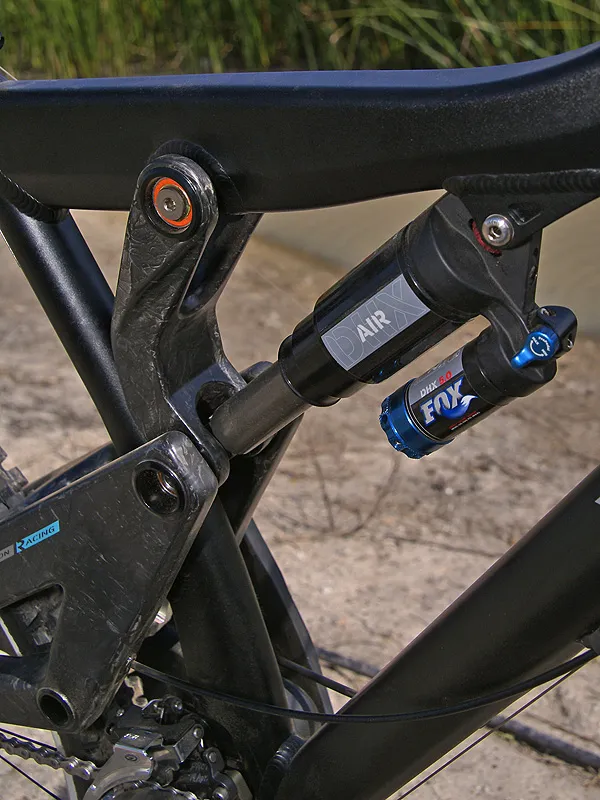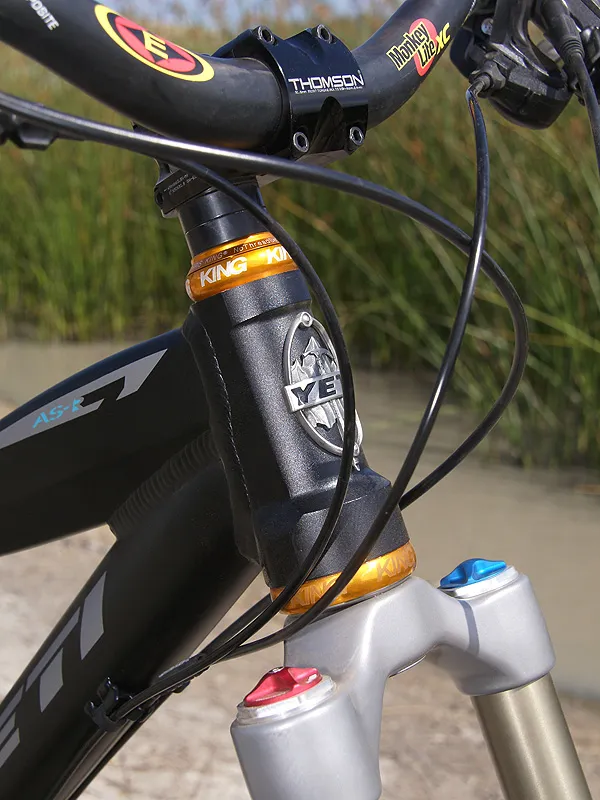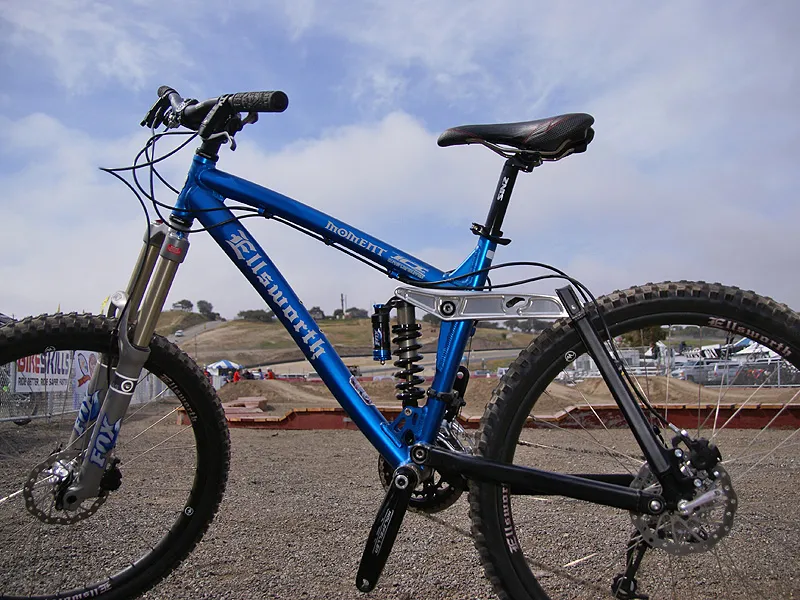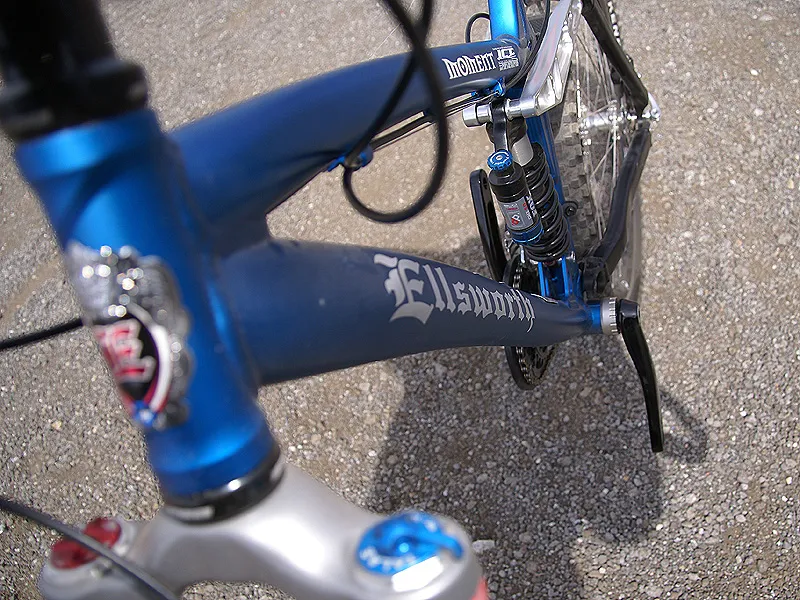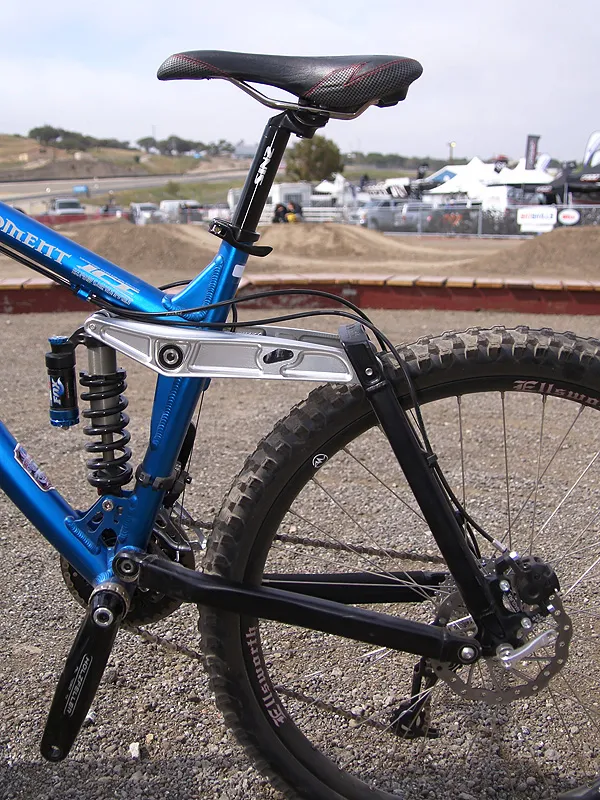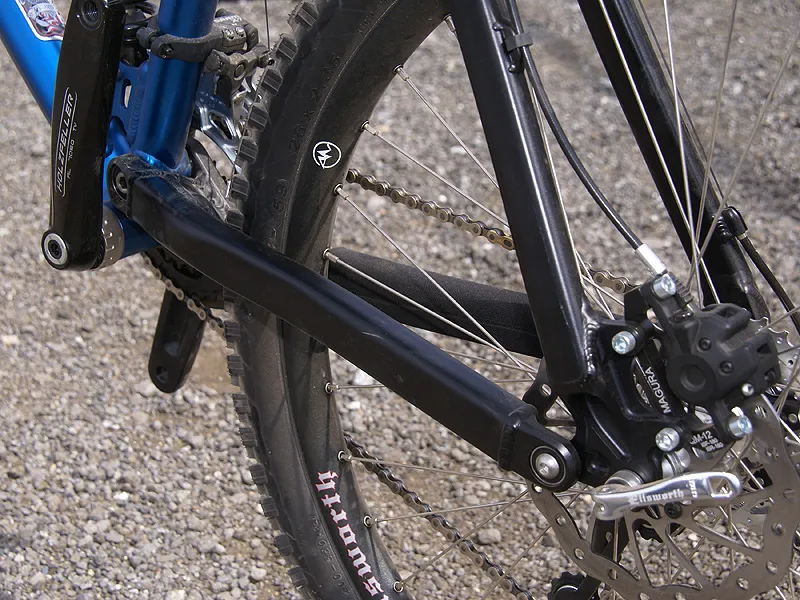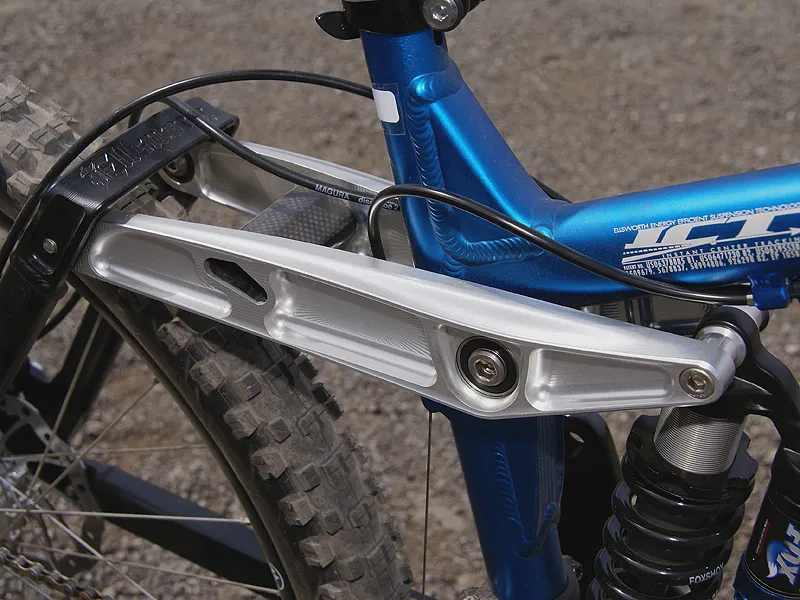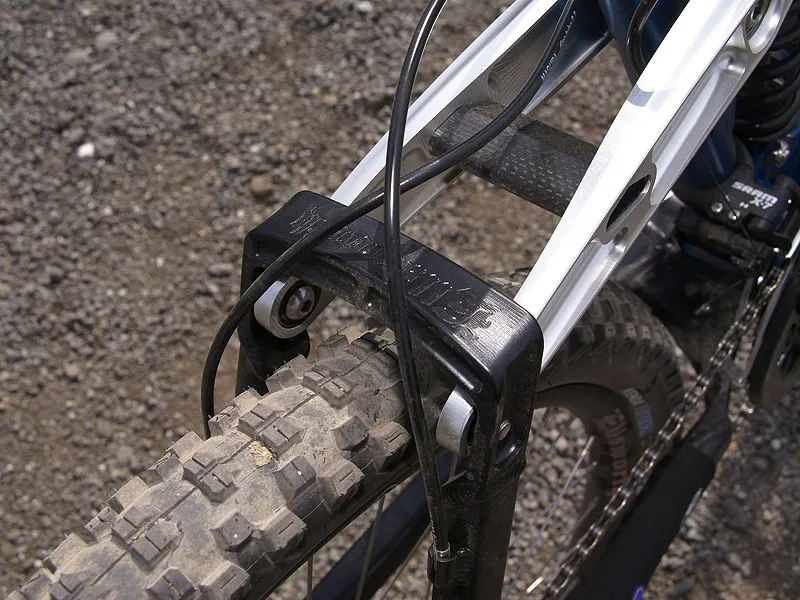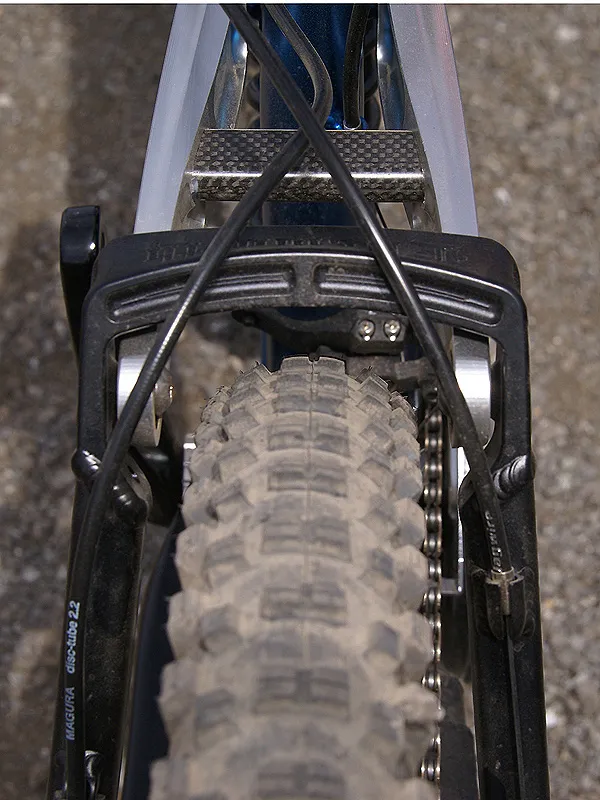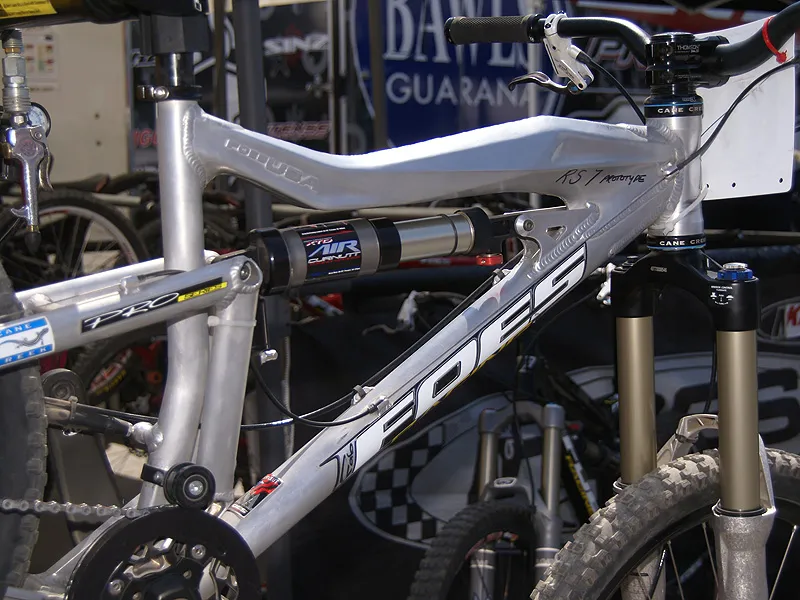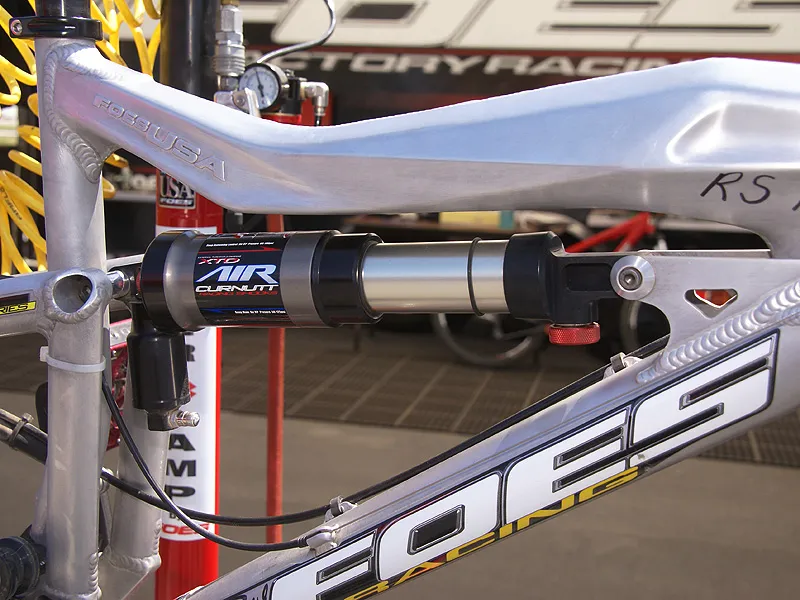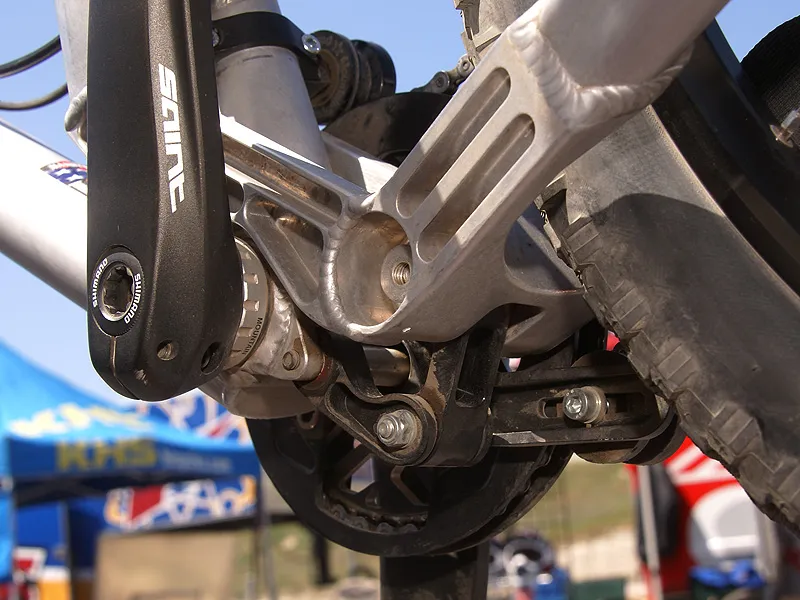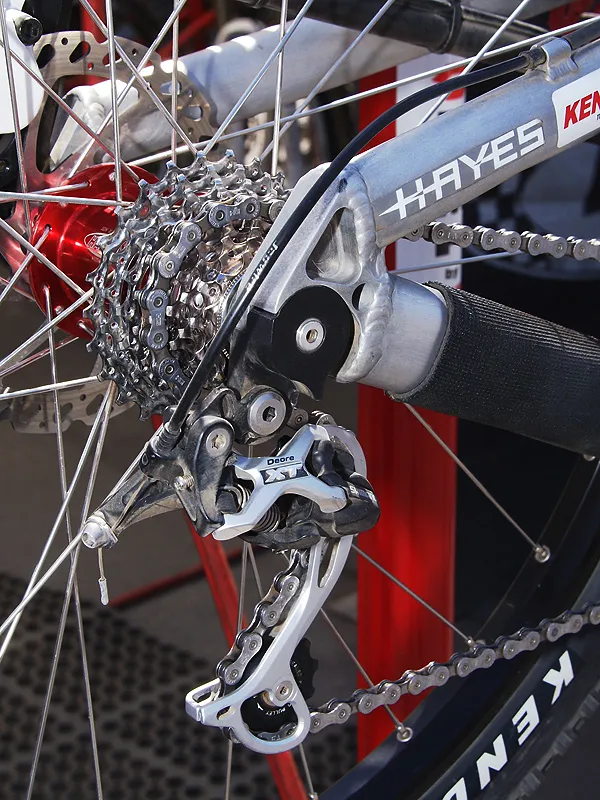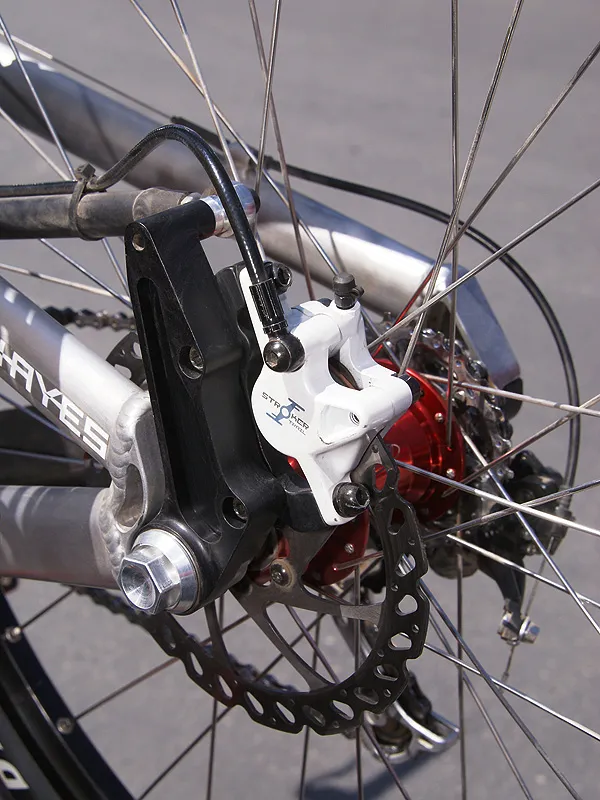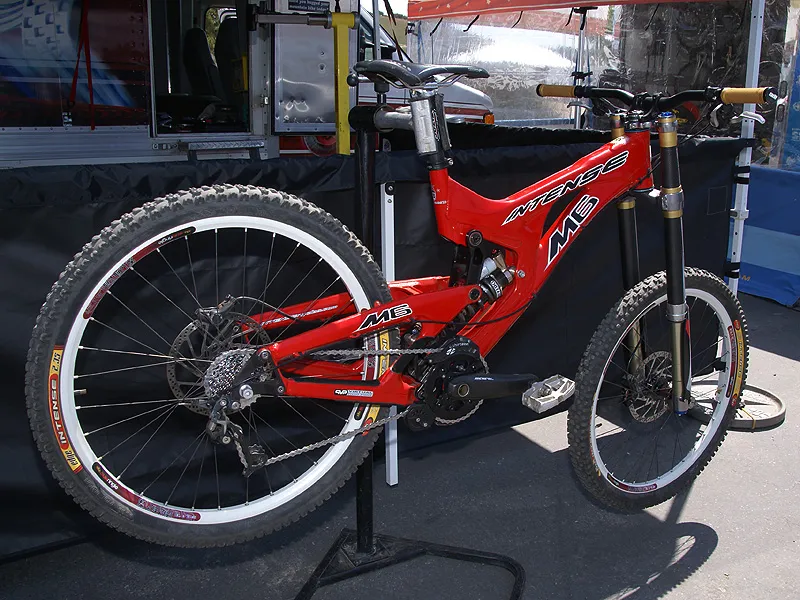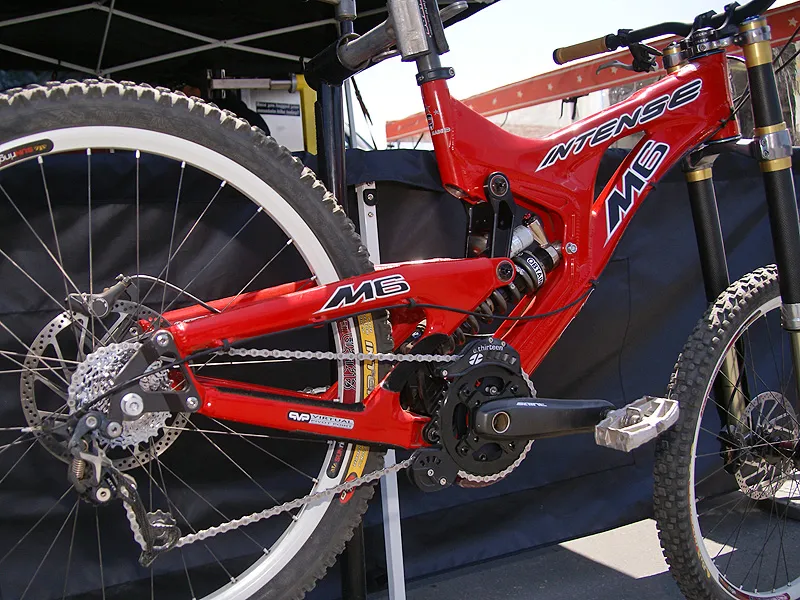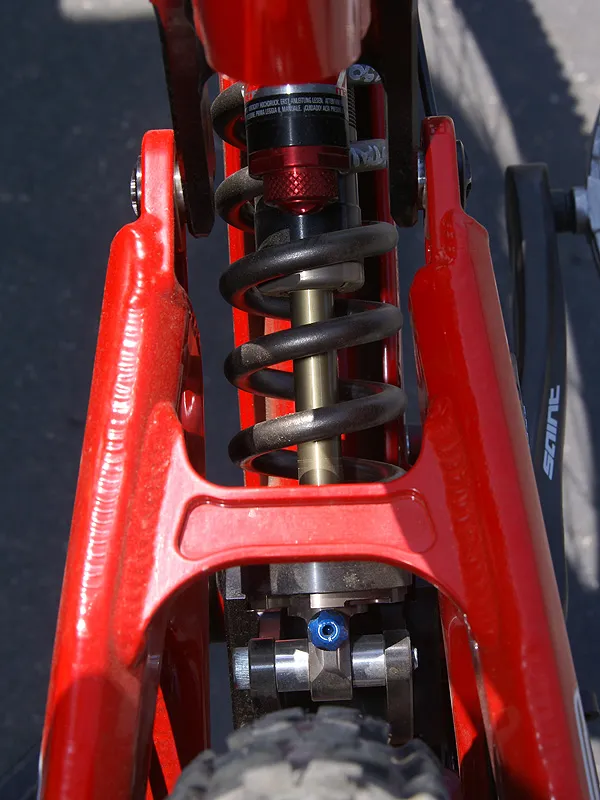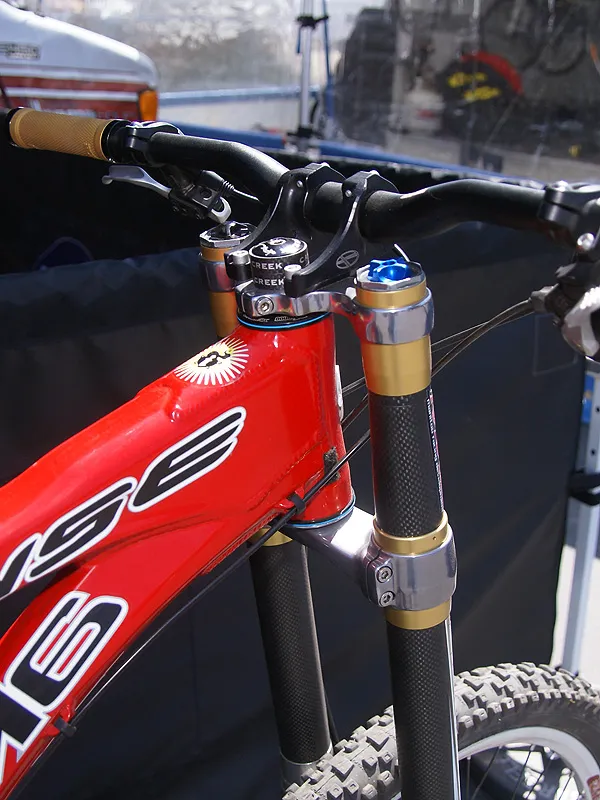A notable mini-trend at Sea Otter was the refinement of long-travel mountain bikes, both for pure downhilling and for more general freeride and all-mountain riding.
Three of the long-time leaders in downhill bikes, Yeti, Intense and Foes, announced new bikes with a trend of less weight and better controlled travel. Ellsworth has come from the other direction, and has substantially overhauled its 6in travel Moment all-mountain bike.
Yeti Cycles unveils trio of striking gravity machines
Yeti Cycles’ product development team has obviously been working overtime lately. Its booth at Sea Otter showcased three all-new prototype gravity rigs, all of which featured some incarnation of the rail technology that Yeti originally introduced on the current 303.
At last year’s Eurobike show, it unveiled a new AS-R Carbon, a revamped standard AS-R and brand-new versions of its popular 575. Weeks later at Interbike Yeti showed off a prototype of its novel AS-R 7. Things are busy at Yeti's Golden Colorado HQ.
The 178mm-travel (7in) 303 RDH is intended as a lighter, simpler and less expensive version of Yeti’s full-blown downhill race machine. The 303 RDH’s rear wheel path is distinctly single-pivot but an intermediate linkage drives the rear shock on a linear rail for more precisely controlled shock rate. According to Yeti’s Chris Conroy, the new frame will end up around 4.5kg (10lb) and US$2500, making it about 0.9kg (2.0lb) lighter and US$1000 cheaper than the 303.
In contrast, the new 303-7 uses a single rail to help control the wheel path instead of the shock, which is directly actuated by the rear swingarm. The rearward axle path should be a boon on square-edged hits and in spite of the roughly 5cm (2in) of chain growth through the full 178mm (7in) travel range, Conroy says the rail’s vertical orientation should mostly mitigate pedal-actuated suspension movement and pedal feedback. Projected frame weight is in the neighborhood of 4.8kg (10.5lb).
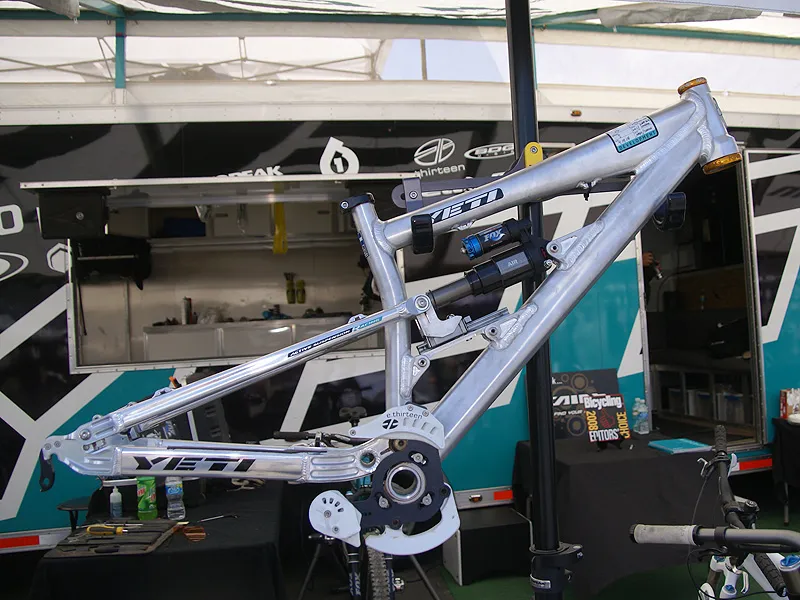
Like the 303 RDH, the 303-R utilizes a rail-controlled shock rate but its shorter travel (137mm/5.4in) and overall stiffer feel will make it more of a four-cross or slopestyle rig than a downhill racer. Tight 42cm (16.5in)-long chain stays and a low bottom bracket should make for snappy acceleration out of the gate and quick handling while the tapered 1 1/8in-to-1 1/2in head tube will allow for the latest crop of big-mountain forks. Conroy says that Yeti is also developing a lighter version of the 303-R to better suit the all-mountain crowd.
All three prototypes are still around a year out of production but will probably end up in the 2009 lineup. Conroy cautioned that all of them require intensive race testing this season and some models might retain their current ‘race team only’ status.
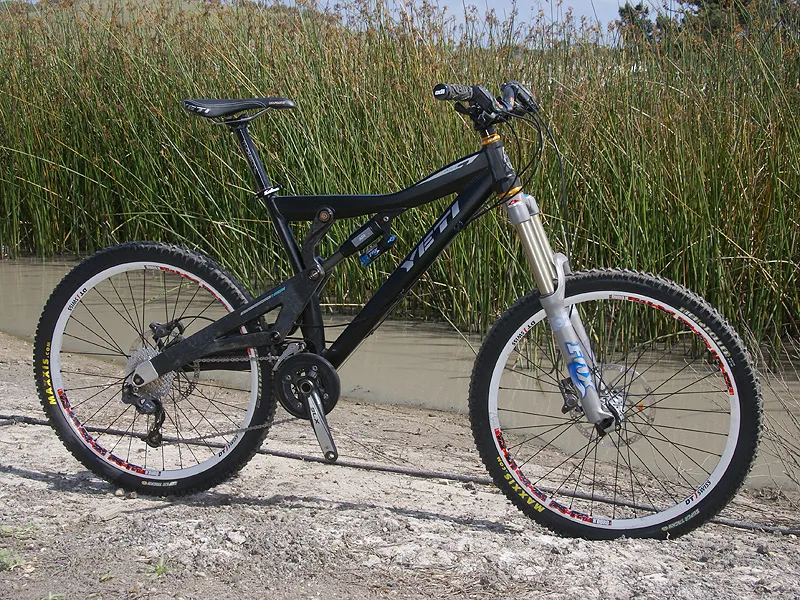
The innovative AS-R 7 was introduced several months ago but production versions finally appeared in Monterey. Frame weight is now pegged at 3.3kg (7.25lb) and the massive single-sided carbon rear end has gained a small aluminum swing link behind the seat tube for added rigidity. Finally, the head tube has now sprouted a 1 1/2in lower cup for use with tapered forks. According to Conroy, frames will begin shipping in June.
As for that much anticipated AS-R Carbon, frame production is now finally in full swing after an initial delay.
Intense Cycles’ downhill platform sprouts new iteration
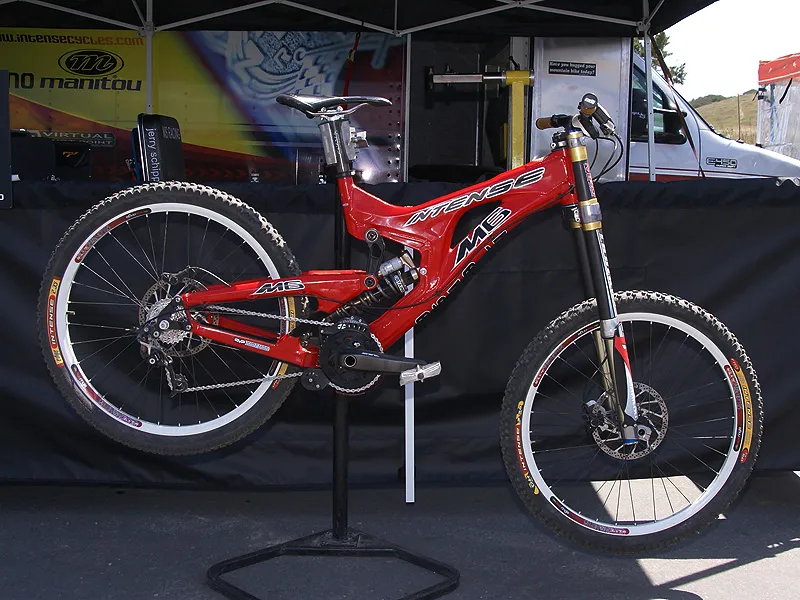
Intense’s venerable M-series of downhill frames has spawned yet another iteration for the new year, aptly named the M6 FRO (For Racing Only). As compared to the M5, the M6 FRO incorporates a swoopier look (including a newly curved down tube) but retains the M5’s 240mm (9.5in) of VPP-enabled rear wheel travel and relatively low 2.6:1 leverage ratio.
Frame geometry has apparently been tweaked for a bit more agility and frame weights have supposedly dropped yet another couple hundred of grams. If the race car red paint job doesn’t do it for you, Intense will also have it available in black, white or ‘Works’ raw silver for the truly weight-conscious.
Foes does lightweight downhill
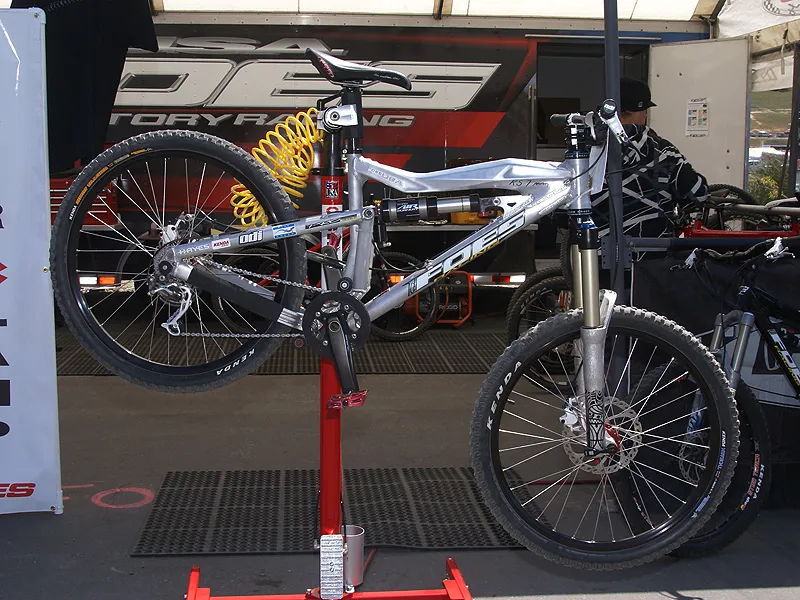
Foes Racing introduced a lighter race-specific downhill option at this year’s Sea Otter that is claimed to shave over 4.5kg (10lb) off of Foes’ own DHS Mono in fully built form. That figure is naturally tough to swallow but the RS7’s claimed frame weight (with shock) is down to 4.1kg (9.1lb), shaving almost 900g (2lb) from the DHS, and Foes anticipates that its associated build will be decidedly more svelte as well.
Travel is reduced down to 178mm (7in) from the DHS Mono’s 250mm (10in) and the primary shock option is an air-sprung Foes XTD. More budget-minded racers can instead opt for a Fox Racing Shox DHX Air but leverage ratio for either is still an unusually, and impressively, low 2:1 as is typical for Foes.
As usual, the RS7 is a single-pivot design but the XTD shock’s Curnutt-style stable platform valving and included floating brake mount should largely negate most of the usual single-pivot drawbacks. Production frames are expected to be ready around September or October.
Ellsworth’s workhorse Moment goes big
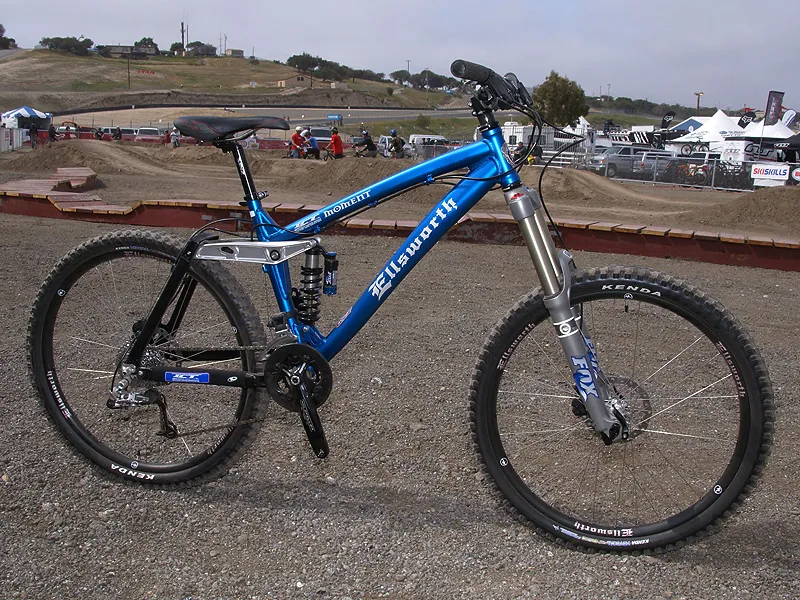
Ellsworth’s 152mm-travel (6in) Moment just received a significant freshening last year but gets a wholly new frame for 2009. The front end sprouts newly curvaceous and shaped aluminum tubing which are claimed to improve torsional rigidity while the ICT-geometry rear end gets substantially beefier.
The asymmetrical swingarm’s chain stays grow noticeably bigger but still deliver more crankarm clearance than on the ’08 model; likewise, the seat stay assembly is stouter and more widely set for more rigidity and far more tire clearance than before. In keeping with the front end’s new aesthetic, the aluminum rocker arms boast some new curves and are now placed inboard of the seat stays to tighten up the rear end.
Head tube size remains 1 1/8in top and bottom and frame weight remains constant but the added rigidity will be a welcome addition. According to Ellsworth’s Paul Verdile, the company has instituted the updates as a running change and new Moment frames are already available.
